Sunday Oct 19, 2014
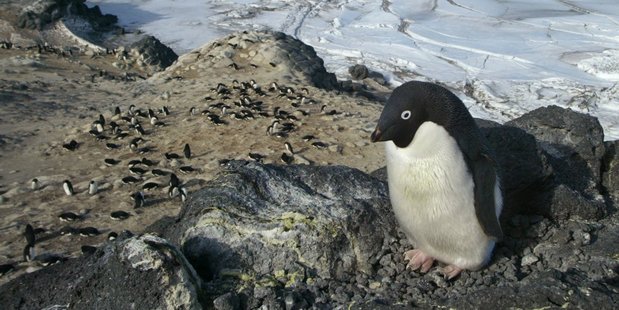
1. Penguins mate for life
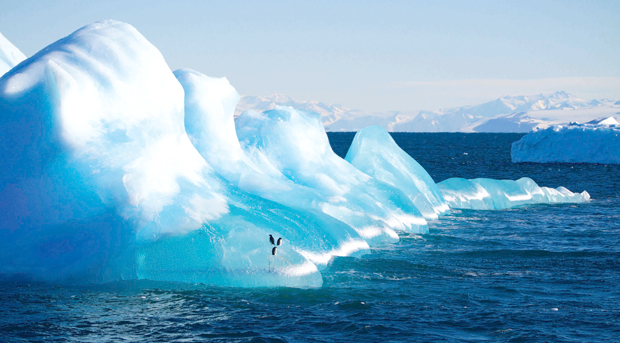
Adelie penguins on an Antarctic iceberg. Photo / Lloyd Spencer Davis
"Just like the previous breeding season, these birds switched mates quite a lot. The interesting thing was that even when both members of a pair that had bred together the previous summer survived the winter migration and ended up back at the subcolony, nearly half ended up with a new partner. This was not at all similar to the TV image of penguins.
One factor that most determined whether a pair would reunite or divorce was whether they had been successful at rearing offspring the year before. But what could be the mechanism whereby a penguin decided a relationship was not working? And what characteristics did they look for in a new partner that they might find indicative of a more successful liaison?
We were able to show that attributes that one might have thought would make a male penguin attractive - having a central nest, being familiar to a female, or being an experienced breeder - were less decisive in a female's choice of a mate than was the proximity of the male's nest to her previous nest site. For while there was a strong tendency of females to reunite with a previous successful partner, if that partner was not at the subcolony when the female arrived at the start of the season, she would take up with a new male. Typically she did so with the unattached male nearest her old nest site, which afforded her the opportunity of switching back to her previous partner should he show up.
But what of females breeding for the first time? How did they select their mates? We decided that the most obvious cue for penguins was likely to reside in their voices. How a penguin sounded might be a more important component to how sexy it was than how it looked."
2. Well, maybe the blokes are promiscuous, but the females must be the faithful ones
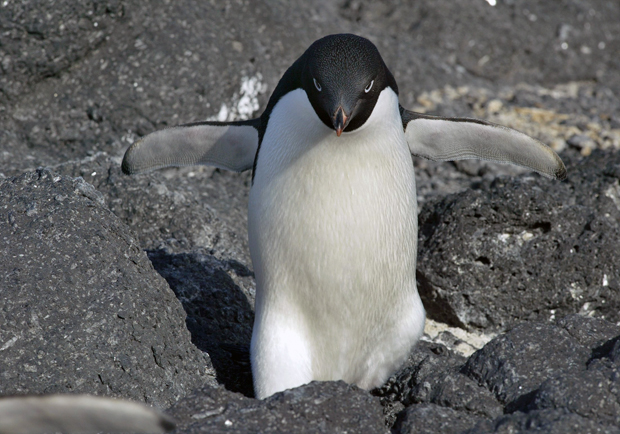
An Adelie penguin on her nest at Cape Royds, Antarctica. Photo / NZH
"To our surprise when we watched the females as intently as we did, we discovered that nearly 10 per cent of them had a quickie on the side. This is true deception and not a 'moving on', as in the case of male switching. In this case, the female remains with her original partner but sneaks away to copulate with another male before returning to her original partner. This raises the stakes for a cheated male; will he rear the offspring while having no idea his female has been with another?
About 9 per cent of eggs are infertile. The male a female is paired with may well be a good provider but if he is not also a provider of genes, the female will have wasted her efforts. By getting sperm from other males, a female may increase the likelihood that her eggs will be fertilised. From the male's point of view, however, this is a disaster. The best thing he can do is guard his mate and maybe copulate with her as often as possible so she is occupied and not disposed to find sex elsewhere.
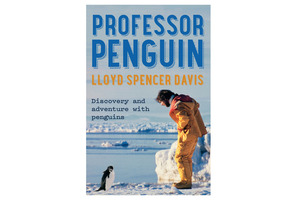
The female will approach the male on his nest and bow deeply, as if interested in sex. The male will, in turn, bow deeply as a somewhat unnecessary signal that he, too, is interested in sex. The male then shuffles aside, exposing his nest so that the female can lie down and he can have his way. Most often, however, the female will simply bend down, help herself to a choice rock from the uncovered nest and march off with it to her own nest and her own lover. It is not stretching the truth to say that she 'takes his money and runs'."
3. Okay, but they care for their young the way humans do ...
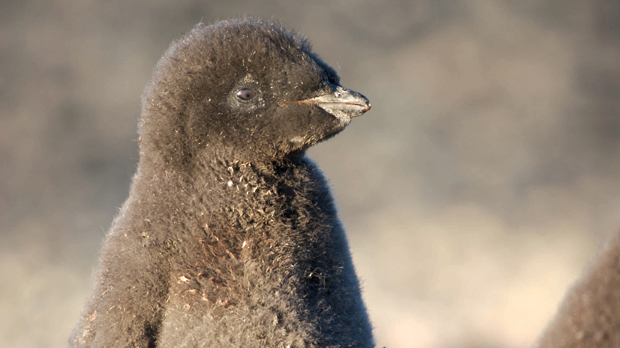
Adelie penguin chicks are left alone by their parents from about three weeks old. Photo / Lloyd Spencer Davis
"One morning, I watched a father called E8 return to his subcolony and, as he neared the edge, call out to his two chicks. They came running towards him immediately, intent on a feed. But instead of feeding his offspring, he turned and ran into the no-penguin's land between the subcolonies, an area patrolled by no less than six pairs of [predator seabird] skuas.
At various times, E8 stopped to feed one or other of his chicks before bounding off again on what has been called, appropriately enough, a 'feeding chase', although it really stemmed from non-feeding so should have been called a non-feeding chase.
When the chicks were satiated and the father had had enough of the running about, he returned to the area of his nest site in the subcolony followed in a sort of bedraggled lumber by his two chicks with their bulging bellies. Except the last one did not get there. A skua grabbed it.
The skua had some difficulty killing the chick. Even with the assistance of its mate, it took the pair of skuas more than 30 minutes of relentless pecking with bills designed for eating fish rather than finishing off fat chicks. Several times the chick managed to break free and stumble towards safety, only to be hauled back by one or other of the skuas grabbing it by its flippers or the back of its head. So why oh why did the father lead it on a chase and thereby put its life and his reproductive success at risk? It didn't make sense."
4. Penguins and polar bears are mortal enemies
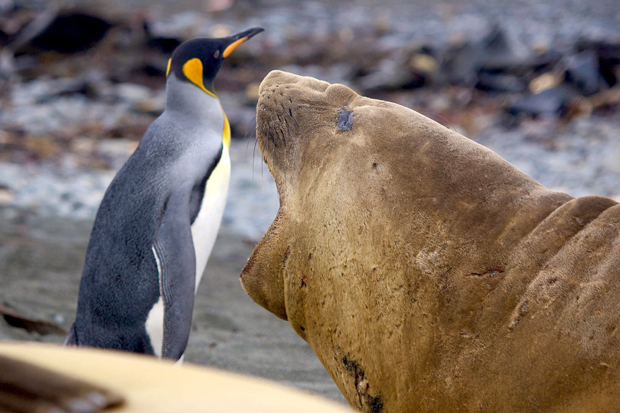
A brave king penguin comes face-to-face with a young male elephant seal. Photo / Lloyd Spencer Davis
"Despite the popular misconceptions - reinforced by cartoonists persisting in showing penguins and polar bears together on ice floes - there are no penguins in the Northern Hemisphere: penguins are creatures exclusively of the Southern Hemisphere.
It is not like conditions in the Northern Hemisphere could not suit them. The waters of the high Arctic are plenty productive enough for a penguin. The problem for penguins is that they evolved in the south and the waters between there and the north are the equivalent of a desert to them. The tropical waters of the equatorial regions are not sufficiently productive enough to support the high intake of food needed to support a penguin lifestyle. There are a couple of isolated exceptions: the coast of Peru and the Galapagos Islands - but these are truly examples of the exception proving the rule. Penguins are only able to exist in such tropical areas because the cold Humbolt Current brings massive amounts of nutrients from much further south and upwells around Peru and the Galapagos Islands."
5. Surely they are, at the very least, happy?
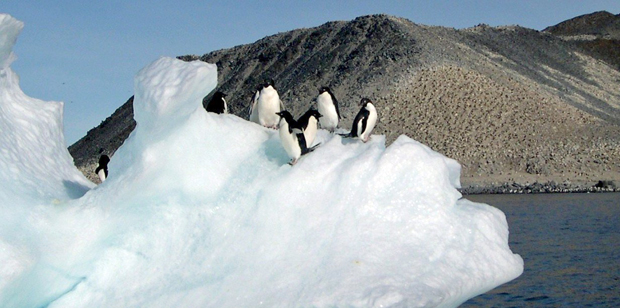
Adelie penguins on iceberg in Antarctica. Photo / Jim Eagles
"The lot of a male Adelie penguin is not always an enviable one. He is charged with taking the first incubation shift while his partner goes to sea to feed. As a penguin, he can only eat when he is at sea, and he has already been engaging in the frivolities of mating - without the candle-lit dinners or courtship feedings that you might find in us or other bird species. This is sex while on a diet. And for males, at least, the fasting has only just begun.
Even on a good day, the fasting males will lose about 50g of bodyweight, which is mainly a measure of the fat they are burning up. There are, of course, limits to their fat stores; an ultimate limit to the duration that the penguins can go without eating. At a certain point, when about 80 per cent of their fat stores are depleted, their bodies switch from burning fat for energy to burning muscle. It is a death sentence if left unheeded. Muscles are the very things that enable the birds to move, that enable them to get the food they need to survive. Burn muscles and go out in a blaze of glory."
• Edited extracts from Professor Penguin by Lloyd Spencer Davis, Random House, RRP$39.99.


















No comments:
Post a Comment